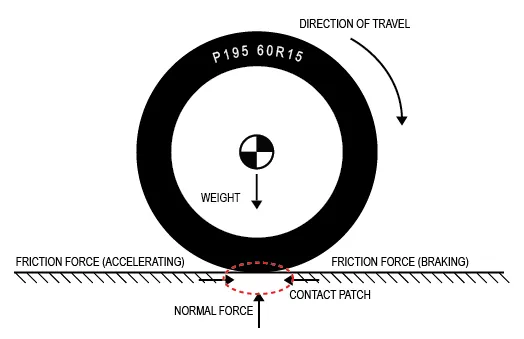What is Rolling Resistance And Some Tips to Reduce It

Approximately 20 to 50 percent of the energy is used by the car if there is increased resistance of tyres to roll. Thus, if by any chance the automotive engineers or tyre engineers can reduce the rolling resistance by at least 10 percent then, the mileage of the car would improve by at least 3 percent.
What is the cause of rolling resistance?
As per the experts of the industry, approximately 1 percent to 5 percent of rolling resistance stems from the drag of aerodynamics. Road friction is another cause that increases the rolling resistance by approximately 9 to 10 percent. The rest of the rolling friction is caused by hysteresis of the material or internal friction.
Given below is the list of hysteretic losses and what can we do to reduce rolling resistance along with them.
Inflation pressure: tyre pressure is one of the most vital factors in rolling resistance. With an increase in pressure, the tyre continues to become circular and form a perfect circle. This leads to a reduction in resistance. Gradually tyres also become stiff lead to reduced flexibility. Thus, the pressure of the Tyres Hull should be optimum and not overinflated.
Slip angle: it is the angle between the direction in which the car is traveling and the plane of the tyre. The slip angle usually increases when a car takes a corner. If the slip angle is high, the rolling resistance would also be higher. However, we can keep the alignment of the wheels intact.
Load: there is an increase in the resistance on the road concerning load. If there is an increase in 1000lb of the car’s load, then the rolling resistance also increases by at least 10lb. For knowing the perfect load for your vehicle visit our reputed centre or visit our website through which you can buy premium, budget and cheap tyres.
The time required to reach equilibrium: the rolling resistance is at the lowest when the tyre is in thermal equilibrium. It takes some time to attain an equilibrium, and however, when it does, there is a reduction in rolling resistance by approximately 30 percent. Unfortunately, the majority of the trips made by cars are less than 20 minutes. One practical approach to establishing equilibrium is to change tyre designs.
Speed: If a person drives at a speed around 5 to 55 mph, then the rolling resistance increases by nearly 1lb. If the speed reaches above these limits, the rolling resistance gets increased. Thus lower speed limits prove to be very helpful.
Torque: if there is a slight amount of torque then the rolling resistance of the tyre also decreases. Thus, tyres usually have less rolling resistance when there is decelerating or accelerating. The benefits of less rolling resistance would compensate for the frictional losses.
Tread depth: as the tyre starts wearing, the rolling resistance also decreases. It is due to a reduction in the tyre material that rebounds and flexes.
Road: one of the most significant causes of rolling resistance that has still not been addressed is road deflection. Every vehicle presses down on the road pushing it down. Thus the tyres are going up slightly.
Read More: Budget And Financial Aid






